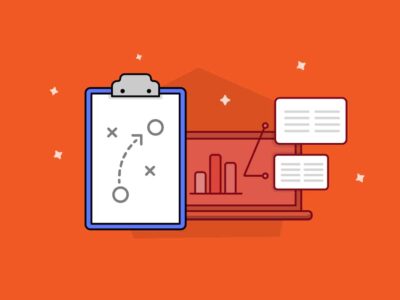We dream of it, work for it, and sometimes we even plan for it — but can the average person with an average job ever get to true financial independence? The answer is a resounding “Yes,” and I can prove it.
What is financial freedom?
Financial freedom is the ability to pay for your lifestyle for the rest of your life without relying on a regular salary or wage. It is often spoken of as “retirement savings” and is usually achieved through saving, contributing to a 401(k), and investing. It is also characterized by a lack of debt.
Do most people achieve financial independence? Regrettably not. The whole notion of retirement funding changed in 1978 when the government launched 401(k) plans. Prior to this unveiling, most people had company-sponsored pensions. Once 401(k) plans became commonplace, employers shed pension plans almost entirely.
This move, however, presented a new problem: workers were never educated in personal finance and were suddenly left to themselves to figure it out. Understandably, this left a lot of people confused about how to set up and contribute to their 401(k).
How much does the average American have saved for retirement?
Here are some alarming 2018 retirement savings statistics from Northwestern Mutual:
- 21% have zero saved or invested
- 31% have less than $5,000
- 40% have less than $25,000
The average worker leaves for retirement with only three times their final year’s compensation in their 401(k), but experts say you need 6 to 12 times that amount.
What does this tell us? Most Americans need help achieving financial freedom in the short- and long-term. So, I’ve sourced two industry experts who’ve spent years researching and defining the right steps to take and are willing to point you in the right direction.
Remember, this type of financial independence takes some level of personal responsibility and self-discipline. But first, you need a plan.
How to Achieve Financial Freedom
Begin by understanding your personal net worth. Your personal net worth is a combination of:
- What you earn
- The assets you own
- The liabilities you owe
Assets include what you own, like a house, investments, or cash in the bank. Liabilities are what you owe — think rent, mortgage, credit card debt, or student loans.
Create a personal net worth statement in a Google Doc or spreadsheet — and start tracking. Or use a handy net worth calculator like this one from Bankrate.
I like to point people to two basic factors important in planning: the earn-to-burn ratio.
- Burn rate: How much money does it cost for you to live your life annually?
- Earn rate: How much money do you receive from your investments (i.e., income-producing assets) — not including the income from your job.
The great news is when earning exceeds burn you’ve achieved financial freedom.
The next step is to increase your assets and decrease your liabilities. But which comes first? Everyone is different — and I don’t want to give specific advice — but once you know what you owe and what you own, you can decide which is more important to focus on first. For many of us, accrued student debt from attending university is one of our biggest liabilities.
How one couple paid off $93K in 30 months
My fellow HubSpotter Lauren Hintz decided to work on liabilities first and tells her story like this:
“My husband and I are a 20-something couple of Midwest transplants living in Boston. We married at age 25 and moved to Sydney for my job at HubSpot. What we didn’t realize about this move was just how much it would teach us about personal finance.
We spent the next two and half years attacking our student loan debt. We craved the financial freedom of planning for our future together and actually getting to keep our paychecks.
When we returned to Boston, graduate school student loan interest had just kicked in. We’d been married less than a year and were still figuring out how to merge our finances, communicate about spending habits, and work together to win with money.
We also got serious about paying off our debt. We did some quick math:
$93,000 loan x 5% interest rate/365 days
We realized we were paying more than $10 a day in interest. That was a wake-up call. During our first year of focusing on our finances, we paid more than $10,000 in interest on our student loans.
During that time, we budgeted, sold stuff, bargain-shopped, rented our guest bedroom for cash, and just plain stopped buying so much junk.
After 30 months of hard work, self-discipline, and delayed gratification, we crushed that $ 93 K in student loans. Along the way, we learned a ton about personal finance and marriage.
It’s been a few months since we finished paying off our debt, and I’m still geeking out about personal finance. I write about money at weirdmoneylife.com and share tips on Instagram at @weirdmoneylife.”
Six Steps to Financial Independence
Alan J. McMillan, a professor at Ohio University and founder of LearnEarnRetire, has defined six steps for increasing your assets on your way to financial independence. Here they are:
As with all financial planning, it’s best to start early in your career and avoid debt. After that, follow these six steps to establish a firm financially by the end of your career.
Step 1: Set Your Initial 401(k) Contribution (percentage of income)
When you join a new organization, you’ll have the option of joining their 401(k) or 403(b) (for nonprofits or public teaching organizations) plan. Some companies will automatically opt you in with a default contribution percentage. Take command of this moment with a predetermined percentage of contribution.
If your employer does not offer a 401(k) or IRA (Individual Retirement Plan), contact an outside investment advisor, create a retirement account, and have your bank make automatic deposits into that account every month.
If you’re working with a 401(k) through your company, the key is to take advantage of employer match, when available. A typical amount is 100% of the first 6% you invest.
That means for every dollar you contribute to your 401(k), the employer matches you. Some deviate from this and will match, say, 50% of your first 6%. Your priority should be to get to the top of the match.
My suggestion is, to begin with a 6% contribution. Be aggressive in what you allocate and learn to live with long-term funding at this level. You’ll see why in a moment.
Step 2: Set Your Goal 401(k) Contribution
When I first began studying this space, I turned to the top personal financial minds in the nation, and most of them agree you should allocate 12-15% of your salary for your 401(k).
You likely won’t be able to contribute that much if you’re just starting out in your career but aim to increase your contribution one percentage point a year until you reach that milestone. I suggest doing this without counting on your employer match — if you get one — and leave that for icing on the cake. Here’s why.
Step 3: Hold Your Lifestyle Flat for The First Number of Years
As you receive raises in your career — especially early on — consider taking those modest raises (say, 2-3% per year) and pushing them entirely to your 401(k). You’ll find yourself at your goal percentage faster than anticipated. Once you’ve reached your goal, allocate 15% of all future raises toward long-term financial security and savings.
Step 4: Take the Pledge
You stand in front of the mirror, raise your right hand, and pledge to yourself, “I will never divert long-term assets (your 401(k) or retirement savings) to near-term expenses (like buying a car or paying off credit cards).
Many people dip into — and spend — 401(k) funds when they leave an employer. The problem with this is the government will hit you with a hefty penalty and you will regret it over the long term.
To combat this, make a pledge to yourself to never divert long-term assets (401(k) contributions or retirement savings) to near-term expenses (like buying a car or paying your credit card).
Step 5: Build an Emergency Fund
Start this habit when you set up your initial 401(k) contribution — or as soon as you read this. To do this, allocate a percentage of your paycheck and have it sent automatically to an emergency saving account at the start of each month.
Your benchmark should be to have at least three to six months of expenses (not compensation) in this account. That way, if your transmission goes out, you have an unexpected healthcare expense, or you lose your job, you have a financial cushion to fall back on.
Oh, and going on vacation or buying holiday presents is not an emergency.
Step 6: Navigate to a Debt-Free Life
We live in a high-consumption world financed by debt. Avoid it. Be smart and protect your long-term goals by using cash to pay for depreciable expenses like automobiles or clothes. Avoid debt at all costs and you’ll thank yourself in 20 years.
So, why should you follow these 6 steps?
Try this free calculator at www.learnearnretire.com. It allows you to run multiple scenarios to see where you might end up financially over time. Remember, there are no guarantees and future financial performance may vary, but this calculator is based on industry research — and if you disagree with the assumptions you can change them.
Financial Freedom Quotes
- “Opportunity is missed by most people because it is dressed in overalls and looks like work.” -Thomas Edison
- “The speed of your success is limited only by your dedication and what you’re willing to sacrifice.” -Nathan W. Morris
- “He who loses money, loses much; He who loses a friend, loses much more; He who loses faith, loses all.” -Eleanor Roosevelt
- “A good financial plan is a road map that shows us exactly how the choices we make today will affect our future.” -Alexa Von Tobel
- “Don’t tell me what you value, show me your budget, and I’ll tell you what you value.” -Joe Biden
- “It’s good to have money and the things that money can buy, but it’s good, too, to check up once in a while and make sure that you haven’t lost the things that money can’t buy.” -George Lorimer
- “Making money is a hobby that will complement any other hobbies you have, beautifully.” -Scott Alexander
- “Time is a currency you can only spend once, so be careful how you spend it.” -Harmon Okinyo
- “There are no secrets to success. It is the result of preparation, hard work, and learning from failure.” -Colin Powell
- “It’s not how much money you make, but how much money you keep, how hard it works for you, and how many generations you keep it for.” -Robert Kiyosaki
- “Making money is happiness. And that’s a great incentive. Making other people happy is a super-happiness.” -Muhammad Yunus
- “A big part of financial freedom is having your heart and mind free from worry about the what-ifs of life.” -Suze Orman
- “We make a living by what we get, but we make a life by what we give.” -Winston Churchill
- “Every day I get up and look through the Forbes list of the richest people in America. If I’m not there, I go to work.” -Robert Orben
- “Money often costs too much.” -Ralph Waldo Emerson
- “Financial peace isn’t the acquisition of stuff. It’s learning to live on less than you make, so you can give money back and have money to invest. You can’t win until you do this.” -Dave Ramsey
- “If you don’t value your time, neither will others. Stop giving away your time and talents. Value what you know and start charging for it” -Kim Garst
- “I never attempt to make money on the stock market. I buy on the assumption that they could close the market the next day and not reopen it for 10 years.” -Warren Buffett
- “Every time you borrow money, you’re robbing your future self.” -Nathan W. Morris
- “Easy payments, easy lease, easy approval. Debt is very easy to get into but makes it hard to live victoriously.” -Bradley Vinson
- “Every day is a bank account, and time is our currency. No one is rich, no one is poor, we’ve got 24 hours each.” -Christopher Rice
- “Formal education will make you a living; self-education will make you a fortune.” -Jim Rohn
- “A wise person should have money in their head but not in their heart.” -Jonathan Swift
- “Wealth consists not in having great possessions but in having few wants.” -Epictetus
- “More important than the how we achieve financial freedom is the why. Find your reasons why you want to be free and wealthy.” -Robert Kiyosaki
- “Never spend your money before you have earned it.” -Thomas Jefferson
- “Investing should be more like watching paint dry or watching grass grow. If you want excitement, take $800 and go to Las Vegas.” -Paul Samuelson
- “When you understand that your self-worth is not determined by your net-worth, then you’ll have financial freedom.” -Suze Orman
- “Too many people spend money they earned … to buy things they don’t want … to impress people that they don’t like.” -Will Rogers
- “Money won’t create success, freedom to make it will.” -Nelson Mandela
- “Saving is a great habit but without investing and tracking, it just sleeps.” -Manoj Arora
- “You either master money or, on some level, money masters you.” -Tony Robbins
- “It is not the man who has too little, but the man who craves more, that is poor.” -Seneca
- “Not everything that can be counted counts, and not everything that counts can be counted.” -Albert Einstein
- “If we command our wealth, we shall be rich and free. If our wealth commands us, we are poor indeed.” -Edmund Burke
Financial freedom isn’t easy. Your friends might live in fancier apartments and drive nicer cars. But if you develop the right habits early on, avoid debt, and live within your means, financial independence could be at your future doorstep.
Related: How to Plan Your Business Finances with The 9-Grid Checklist














